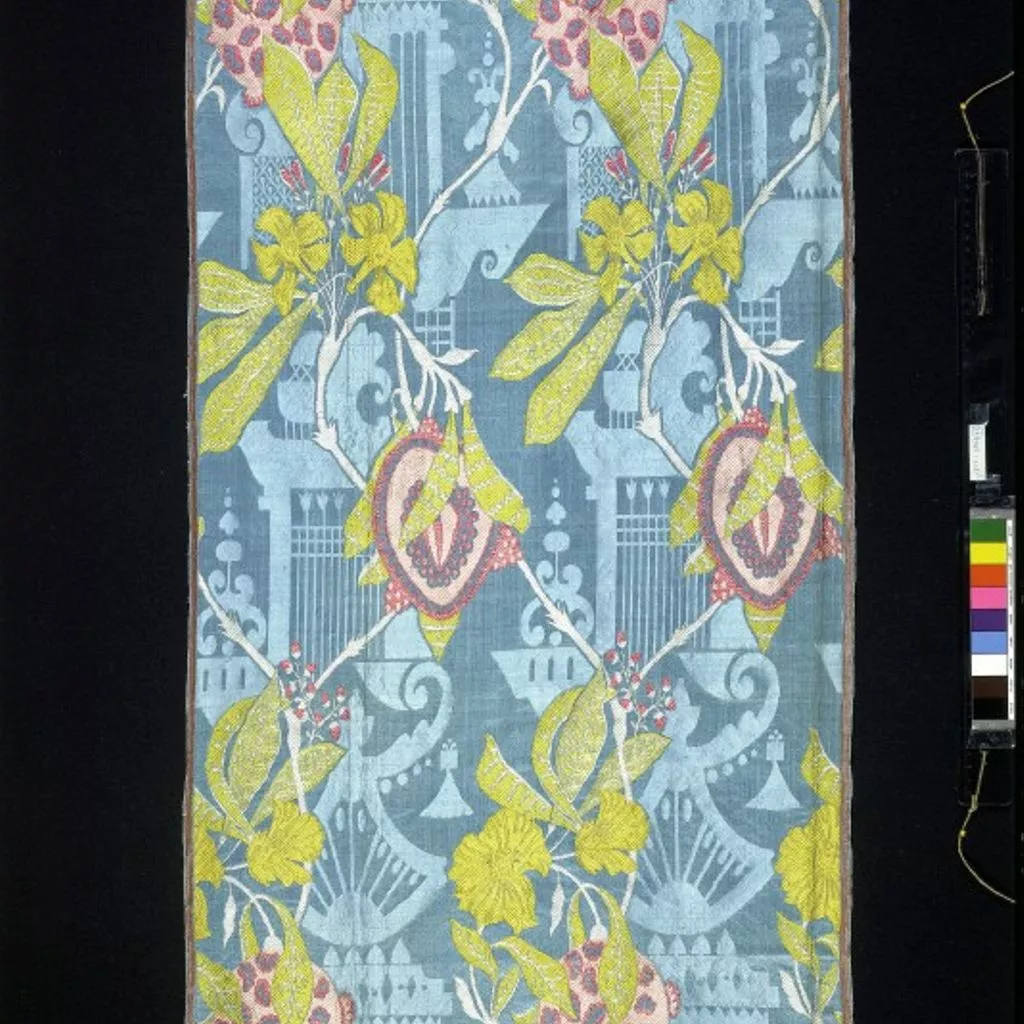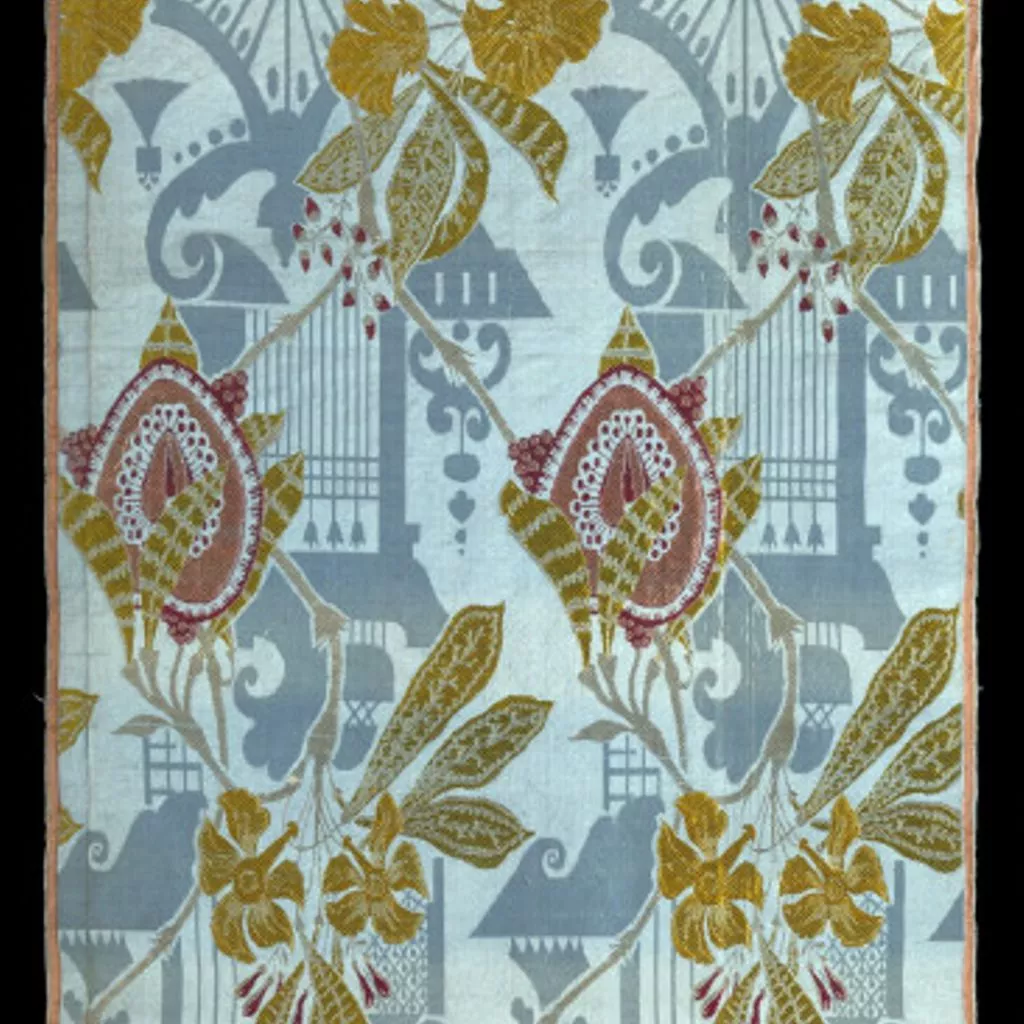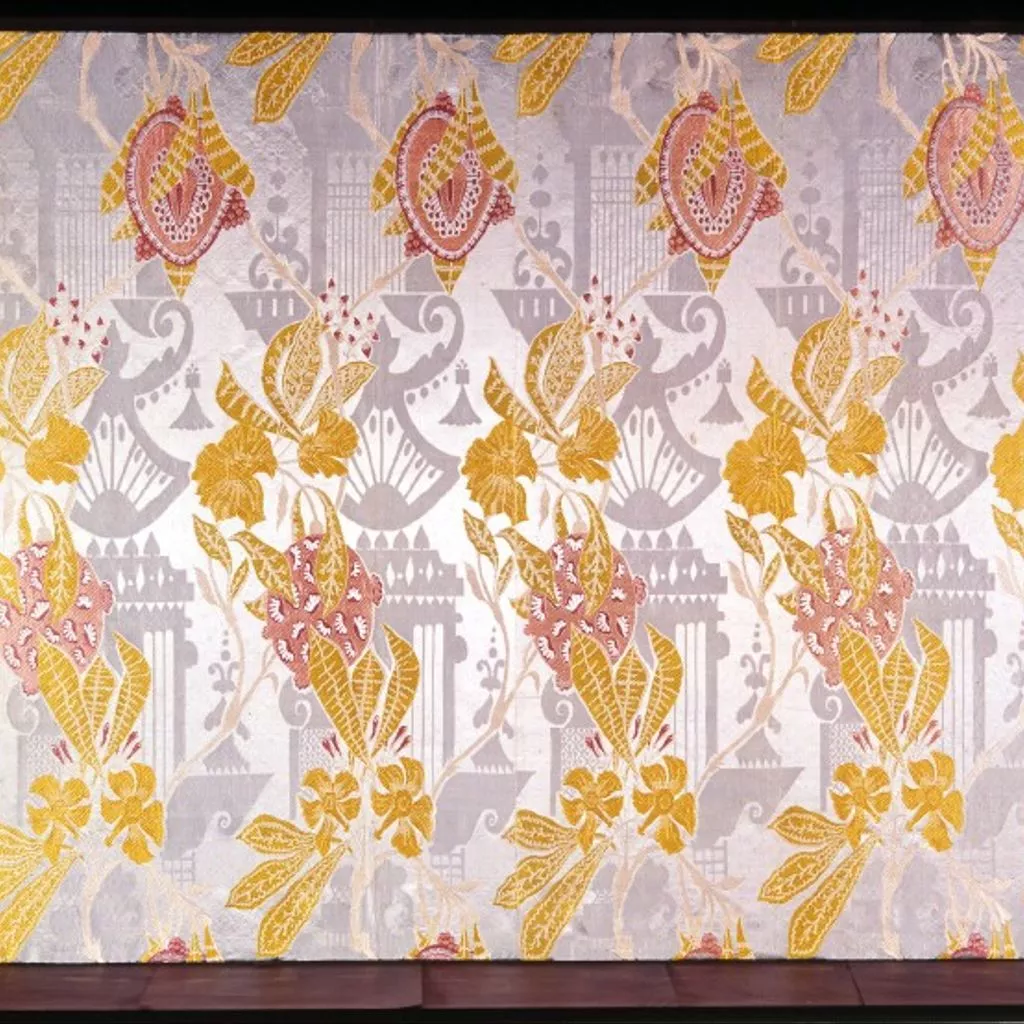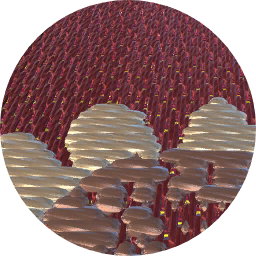1708~, Spitalfields
1708~, Spitalfields
- Identifier
- 711-1864
- Collection
- Technique
- Embroidery 98%
- Embroidery 73%

- Embroidery 56%

- Embroidery 92%
- Depiction
- Floral motif 96%

- Floral motif 96%

- Floral motif 86%

- Floral motif 84%

- Floral motif 96%
- Dimension
- 165 cm (height)52 cm (width)
- Production time
- Production place
- Type of object
Description
This length of woven silk was intended for clothing. It might have been chosen for a woman's gown, a man's waistcoat or a nightgown, worn informally at home. The complexity of its woven structure would have made it expensive, while its bold pattern and distinctive colouring date it to a fairly brief period when such a combination was highly fashionable.
Design & Designing
This silk shows what a bold visual effect a brocaded damask could achieve. The designer has set brightly-coloured plant forms against a background of more formal architectural-type motifs whose subtle lines become apparent with the reflection of light. This was a typical juxtaposition of effects in fashionable silks of the early 1700s, which showed a particular exoticism which has been given the name 'bizarre'. This silk shows an English interpretation of the style. Influences included the highly patterned textiles and other decorative objects imported into Europe by the East India companies.
Place
This silk was acquired by the Museum in 1864 as Italian. Its design considered at that time too exotic to be English. But we now know from the signed and dated designs of the master weaver and designer, James Leman, that fabrics like this were woven in Spitalfields, in London. Dress fabric, silk damask brocaded with coloured silks, England (Spitalfields), ca. 1708






